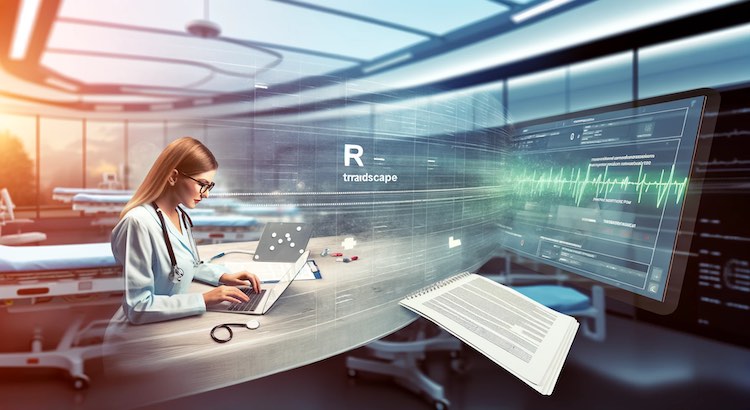How to Transcribe Google Meet Meetings: A Step-by-Step Guide
Virtual meetings are now standard in many workplaces, schools, and organizations. Having a written record of these meetings helps teams avoid confusion and supports accurate record-keeping. Transcribing Google Meet sessions gives you an easy-to-reference transcript, making sure you never miss key information. This guide explains, in simple steps, how to transcribe your Google Meet meetings.
Why Should You Transcribe Google Meet Meetings?
- Better Record-Keeping: A transcript gives you a reliable record. You can review details later to make important decisions and prevent mistakes.
- Accessibility: People who are deaf, hard of hearing, or non-native English speakers can follow along more easily with a written transcript.
- Easy Collaboration: Sharing transcripts helps your team communicate clearly, delegate tasks, and track action items (Pew Research, 2021).
Preparing for Transcription
Get Your Google Meet Session Ready
- Use Good Equipment: Ask everyone to join with working microphones or headsets. Clear audio improves transcription quality.
- Check Your Internet: A strong, steady connection reduces glitches in the audio recording.
- Reduce Background Noise: Choose a quiet space and ask everyone to mute when not speaking. This keeps the recording crisp and clear.
Recording Your Google Meet Meeting (If Allowed)
- Start or join your Google Meet meeting.
- Click the “Activities” (shield icon) in the corner of your screen.
- Select Recording and then click Start Recording.
- Confirm by clicking Start again. The recording gets saved to the host's Google Drive.
Tip: Don’t have access to recording? Try Google Meet’s live captions or a third-party transcription tool.
Using Live Captions (Optional Step)
- Turn on captions by clicking the CC icon on the toolbar.
- Google Meet will show live, automatic speech-to-text captions during the meeting.
Captions are helpful for accessibility, but they are not always 100% accurate and cannot be saved as a shareable transcript. For official records, use a dedicated transcription method.
Choosing a Transcription Method
Option 1: Automated Transcription Software
- Apps and tools, such as automated transcription services from GoTranscript, convert audio to text in minutes.
- Pros: Fast, affordable, good for short meetings with clear audio.
- Cons: May need editing due to mistakes, especially in group calls or noisy settings.
Option 2: Human-Based Transcription Services
- Professional transcription services use expert listeners to produce highly accurate transcripts of your Google Meet recordings.
- Pros: Accurate, with careful attention to context, jargon, and multiple speakers.
- Cons: Takes longer to deliver and costs more than machine-based tools.
Option 3: Manual Transcription
- Transcribe the meeting yourself or assign the task to a team member.
- Pros: You have full control and can catch details that automated tools may miss.
- Cons: Time-consuming; easy to overlook errors or miss details.
How to Transcribe a Google Meet Recording
- Sign Up or Log In: Create an account with your chosen tool or service (Order transcription).
- Upload the Recording: Add your Google Meet file, either by dragging the file or providing a link from Google Drive.
- Set Preferences: Choose your transcript style (verbatim, timestamps, speaker labels).
- Review and Confirm Order: Complete payment if needed and start the transcription process.
- Download and Check: Once ready, download the transcript and proofread for any errors.
Storing and Sharing Your Transcript
- Save Securely: Keep your transcript in the cloud (Google Drive, Dropbox) for safe access and sharing.
- Share Easily: Provide team members and stakeholders with links or copies of the transcript.
- Integrate with Tools: Link the transcript within your project management or learning platforms for convenience (Statista, 2022).
Tips for More Useful Transcripts
- Label Speakers: Use speaker names or titles for clarity.
- Include Timestamps: Add time markers (every 30 seconds or with each speaker change) for quick navigation.
- Proofread Carefully: Make sure the transcript is free of errors, especially if created by an automated tool. For extra help, try proofreading services.
Popular Uses for Meeting Transcripts
- Aligning Teams: Reference transcripts from sales calls, brainstorms, or project meetings to keep everyone on the same page.
- Education or Training: Give students or staff both audio and written materials to boost understanding.
- Clear Client Communications: Use transcripts to ensure you record all agreements and action steps.
FAQ: Google Meet Transcription
-
Can I transcribe a meeting if I am not the host?
Yes. If you can access the recording or use captions, you can transcribe the meeting. Always check permissions and privacy policies first. -
Are Google Meet captions enough for official documentation?
No. While captions aid understanding, they are often incomplete and cannot be exported. Use a dedicated transcription service for professional needs. -
Can I transcribe meetings in other languages?
Yes. Some services let you choose from many languages. For high-quality results, look for a provider offering dedicated audio translation services.
Conclusion: Make Your Google Meet Meetings Count
Transcribing your Google Meet meetings helps you keep reliable records, supports teamwork, and makes your meetings more inclusive. Whether you want quick, automated results or the highest accuracy from professional transcriptionists, GoTranscript can help. Learn more about transcription services, explore automated solutions or AI-powered subscriptions, and discover transparent transcription pricing. Ready to get started? Order transcription now and transform your Google Meet meetings into clear, accessible records.



















 Verified Order
Verified Order